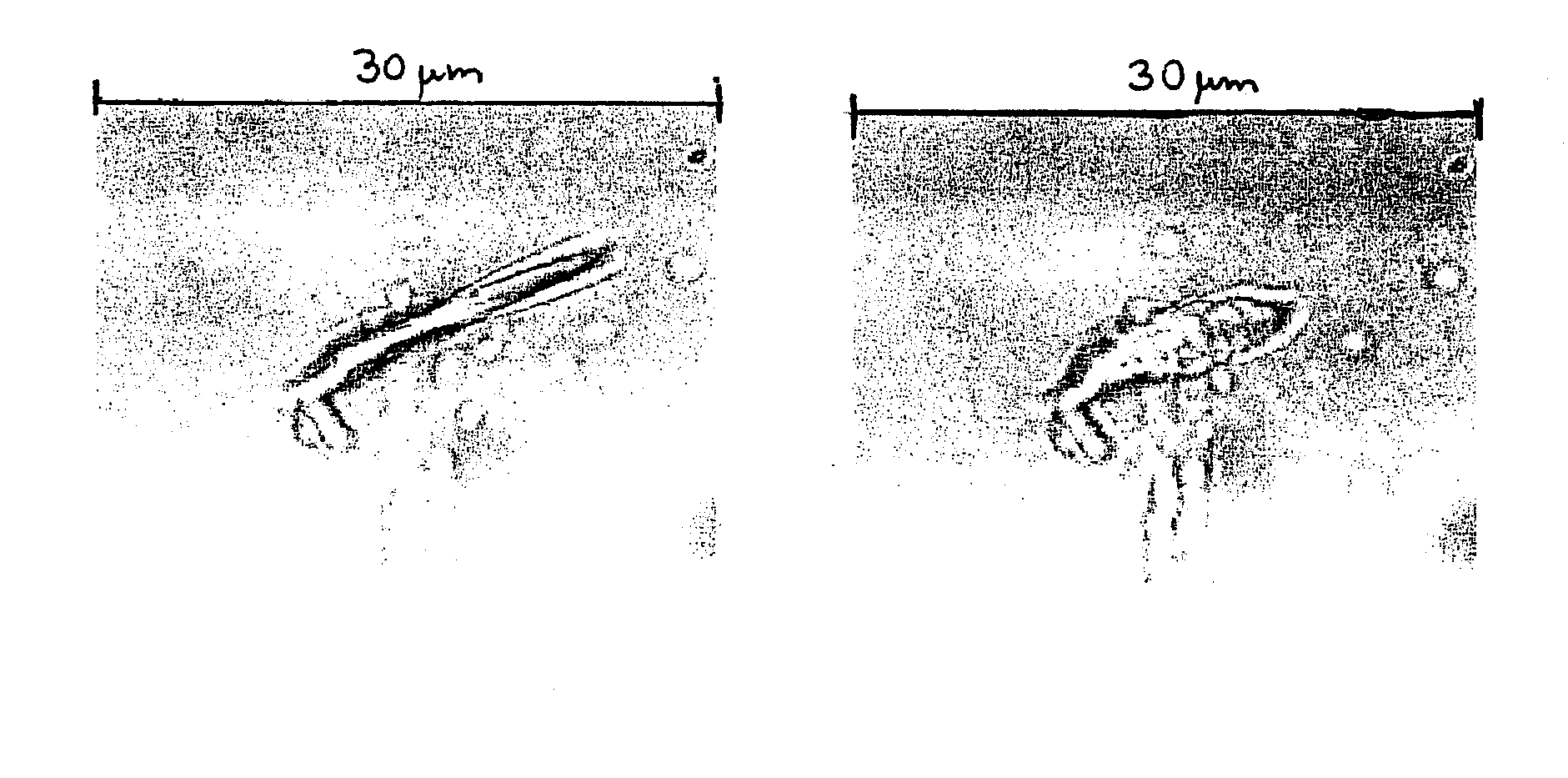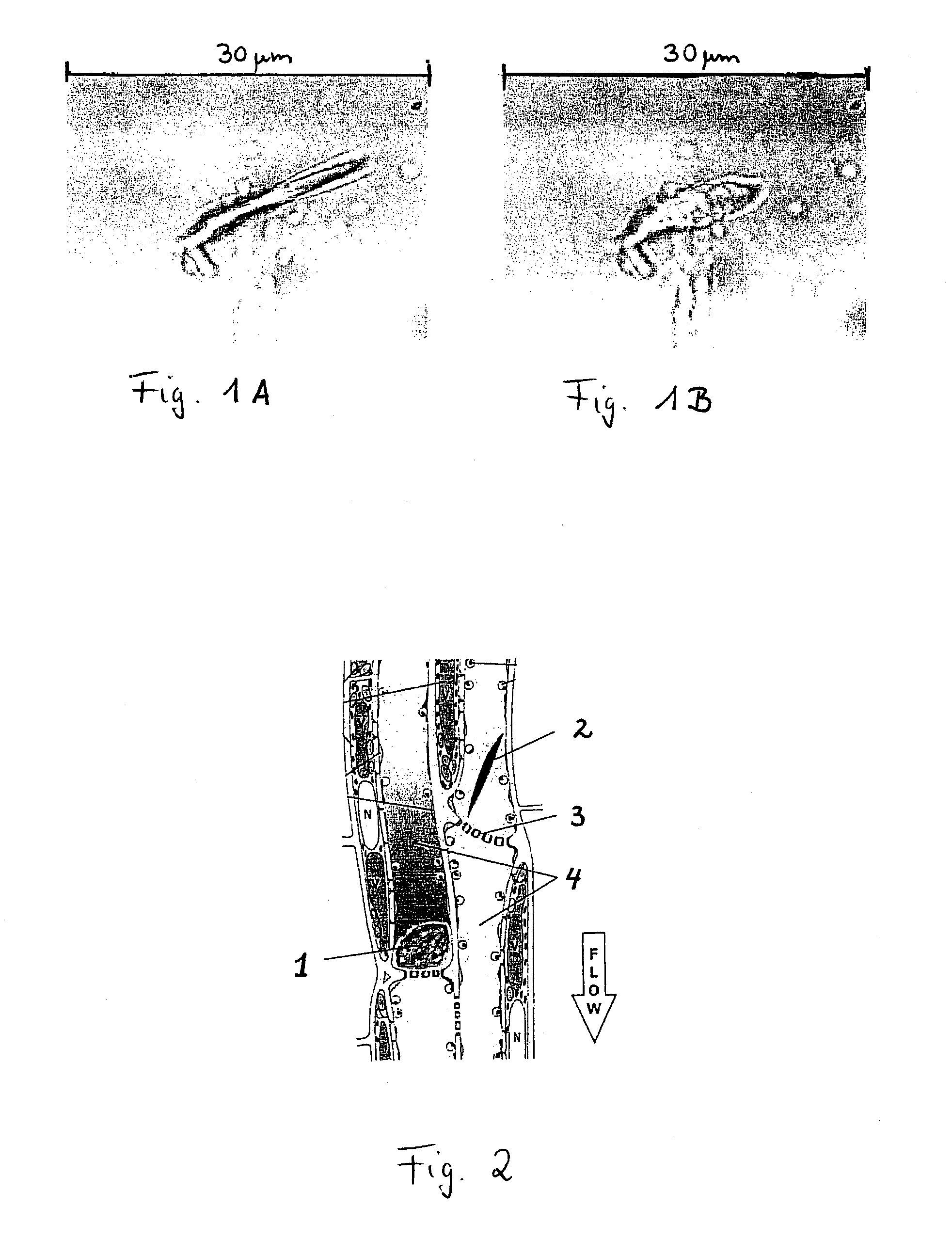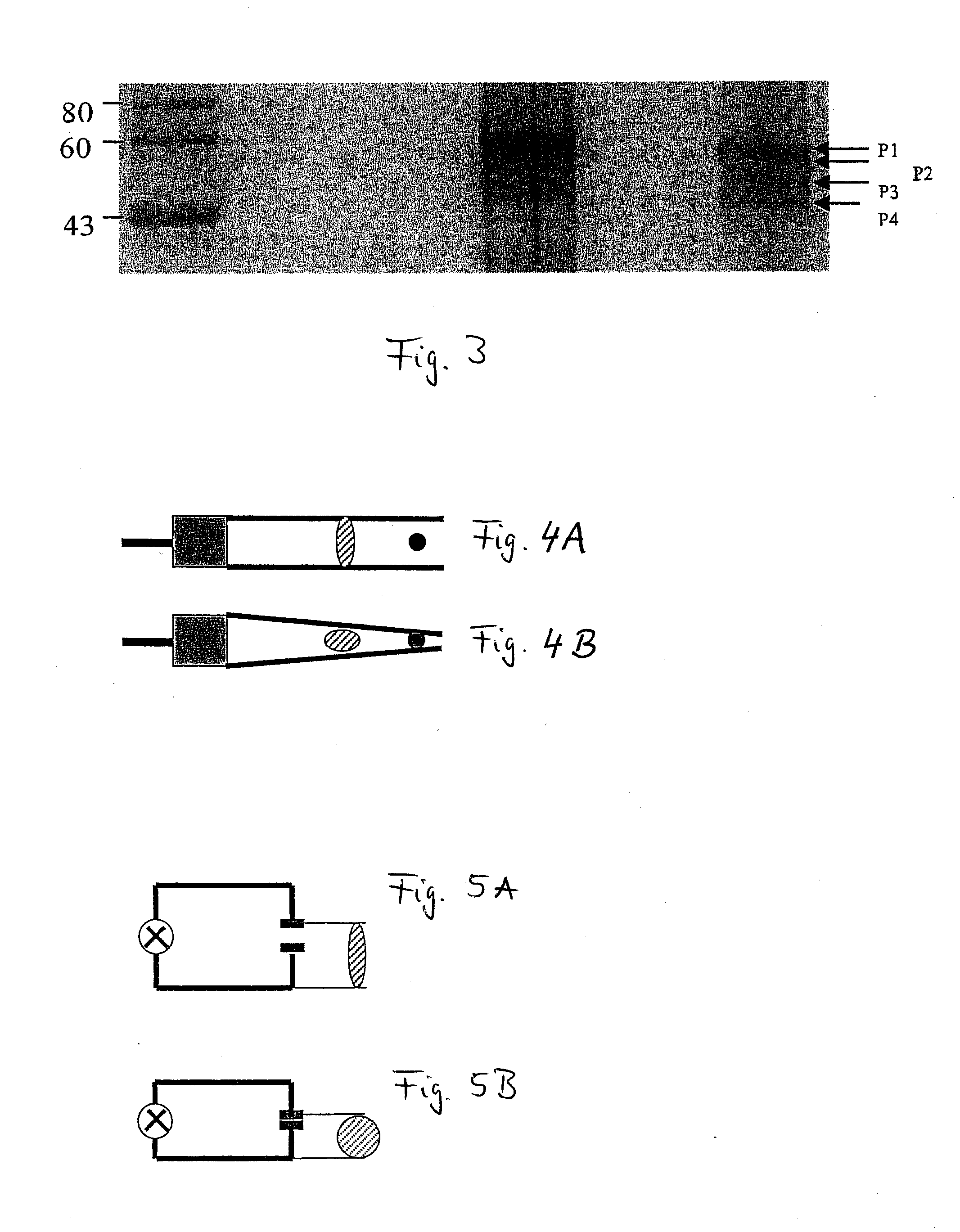Forisomes, Method for Their Isolation, and Their Use as a Molecular Working Machine
a technology of forisomes and molecular working machines, applied in the field of forisomes, can solve the problems of only minimal reactivity and extremely difficult isolation
- Summary
- Abstract
- Description
- Claims
- Application Information
AI Technical Summary
Benefits of technology
Problems solved by technology
Method used
Image
Examples
example 1
Purification of Forisomes of Vicia faba
[0044]Remarks: Vicia faba L. cv Witkiem major (Nunhem Zadenh BV, Haelen, The Netherlands) or other Vicia faba varieties can be grown without problems in a greenhouse.
[0045]1. Separation of the root from the shoot at the hypocotyl: the stem of the plants (7-8 weeks old) were separated by a razor blade shortly above the soil line; subsequently, all leaves were removed, and 10 cm of the stem tip cut off.
[0046]2. Separation of the cortex inclusive phloem from the xylem cylinder: method for separation of the phloem from the rest of the stem (the intact stem is illustrated in FIG. 6A). An effective technique was found in carrying out two oppositely positioned cuts along the longitudinal axis of the plant that cut through the bark to the xylem of the conducting tissues which are annularly arranged (see FIG. 6B). Subsequently, the bark was carefully removed along the xylem (FIG. 6 C.). It was observed when doing so that the phloem adhered to the inner...
example 1a
[0059]Example 1 was repeated with Vicia plants of the same age whose secondary growth had already started. The separation of cortex and phloem from the xylem cylinder was carried out as follows.
[0060]In these plants, the phloem closed to form a cylinder by formation of an interfascicular cambium. The sclerenchyma fibers were also formed stronger so that, after separation of the cortex from xylem, a removal of the sclerenchyma fibers by means of tweezers was difficult to perform and resulted in a high loss of phloem. In these plans, it was much more effective to remove the phloem after termination of the incubation period by means of a blunt scalpel from the inner surface of the bark. This has the advantage that also the sclerenchyma fibers can be separated. Moreover, the yield of phloem is significantly higher than in the Vicia plants without secondary growth.
example 1b
[0061]Example 1 was repeated wherein the gradient centrifugation according to steps 7 and 8 was carried out with a plant suspension to which was added, before pouring the gradient, 0.1% Triton X100 in order to remove membrane and cell wall proteins and to reduce possibly occurring interactions between the forisomes and the membrane residues. After centrifugation under the same conditions, a band distribution according to FIG. 7B was obtained. Even though no chloroplast band could be observed, the forisomes, despite the treatment with Triton, were found primarily within the membrane band (1).
PUM
| Property | Measurement | Unit |
|---|---|---|
| molecular weight | aaaaa | aaaaa |
| molecular weight | aaaaa | aaaaa |
| length | aaaaa | aaaaa |
Abstract
Description
Claims
Application Information
 Login to View More
Login to View More - R&D
- Intellectual Property
- Life Sciences
- Materials
- Tech Scout
- Unparalleled Data Quality
- Higher Quality Content
- 60% Fewer Hallucinations
Browse by: Latest US Patents, China's latest patents, Technical Efficacy Thesaurus, Application Domain, Technology Topic, Popular Technical Reports.
© 2025 PatSnap. All rights reserved.Legal|Privacy policy|Modern Slavery Act Transparency Statement|Sitemap|About US| Contact US: help@patsnap.com



